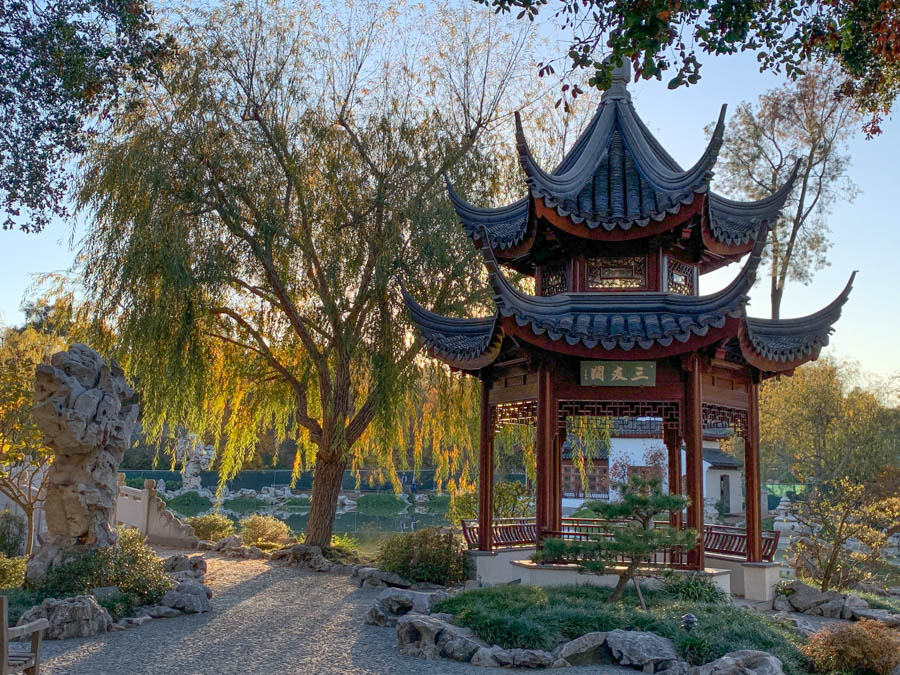Tea Time With The Finch's 12/13/2018
We are off for an adventure! Tea time done proper...we follow Brian and Jan's lead except for licking our thumbs and tossing sugar cubes over ones shoulders!


First stop, Brian's great great great ....... great grandfather

Striking resemblance (we are glad Brian is wearing long pants!)

Christmas time means Holly
Did You Know? - Holly and Ivy were Pagan fertility symbols originally used in pre-Christian times to celebrate the Winter Solstice Festival, to ward off evil spirits, and to celebrate new growth.
In pagan times, Holly was thought to be a male plant and Ivy a female plant. A contest between Holly and Ivy would determine whether a husband or wife would rule the household during the coming year, so decorating with ivy only would give the woman the upper hand.

Ivy lost this battle!
Did You Know? - When Christianity came into Western Europe, the meaning of the holiday changed, but the display of the greenery continued. As a result, Holly and Ivy have been traditional Christmas decorations since Roman times.
Despite early church ambivalence about the continued display of Pagan symbols -- particularly with Ivy, which grew in the shade and therefore would be associated with secrecy and debauchery -- Christians now welcome the display of greenery at Christmas time, and have assigned Christian symbolism to both plants.
To Christians, holly's prickly leaves represent the crown of thorns that Jesus wore when he was crucified. The berries are the drops of blood that were shed by Jesus because of the thorns. In Scandinavia, holly is known as the Christ Thorn.
Christians note that Ivy must cling to something to support itself as it grows -- a reminder to Christians to cling to God for support, which is analogous to the Pagan belief that women might cling to men for support. Ivy also serves as a symbol of charity, reminding Christians to help the less fortunate. As an evergreen, Ivy is also said to represent the immortality or eternal life of Christ.



Brian could not resist!

In the UK they are called "Bunny Rabbits"...
We call them Snap Dragons!

Frequent Flyer Iris ... Introduced in 1994!


BRIAN!!! It is not an outdoor loo!

We stopped him just in the nick of time!

Santa and the Space Race!

Sue could not look into the Sun so...

Paul blocked the Sun!

Handsome devil!


The day was amazing and the golden leaves were fantastic

The Gold Rush all over again!

Crape Myrtle leaves were spectacular!

The ground was covered in gold! Yellow Gold!
Curious! - I kept remarking how gold the leaves were and Sue said "Gold?" The it dawned on me, I had my sunglasses on... So I put the sun glasses in front of the lens on the iPhone and voila... a different color tree appeared!

Amazing change through my sunglasses!

Now I had to check every tree with and without glasses!


Never knew that Brian smoked certain weeds...
OK, not really but we sure teased the Docent!

Used in rituals and ceremonies for centuries, white sage is often burned to create its intended effects. Burning sage is a ritual known as smudging. Smudging is a cleansing ceremony used to help people, places, or even objects get rid of negative energy or even bad spirits.
Did You Know? - A Docent is a volunteer who leads tours in an art museum.

Checkout the sky... Not a cloud to be seen!

The grapes are certainly done for the season!
Looks like rusty steel from a distance


The Mad Hatters Tea Party is about to begin!

Time for the colonists to get a lesson in proper tea etiquette

We are watching serious here!


No a drop spilled.... yet!
Plop plop fizz fizz
... Oh what a drink this is!

Oh oh... They are starting to smile!

Speaking of smiles!

Paul ordered the seasonal tea - Aztec Spice
This pew-erh* tea heats things up with a rich blend
of cinnamon-drenched chocolate and gentle
heat from chili flakes.
*Pu'er or pu-erh is a variety of fermented tea produced in Yunnan province, China. The town of Pu'er is named after the tea that is produced close by. Fermentation in the context of tea production involves microbial fermentation and oxidation of the tea leaves, after they have been dried and rolled.

Gathering of the Eagles!

Two hours of walking to burn off the calories!



The flowers on the top look like candles

Brian snapped a picture!
We told him that the cactus would not move!

See the cactus which has grown up the side of the tree?

Last weeks rain washed off all the dust!

Amazing yellows!


It is called the "Silk Floss Tree" from South America
Did You Know? -
The natural habitat of the silk floss tree is the north-east of Argentina, east of Bolivia, Paraguay, Uruguay and southern Brazil. It is resistant to drought and moderate cold. It grows fast in spurts when water is abundant, and sometimes reaches more than 25 meters (82 ft) in height. Its trunk is bottle-shaped, generally bulging in its lower third, measuring up to 2 meters (7 ft) in girth. The trunk is also studded with thick, sharp conical prickles which deter wild animals from climbing the trees. In younger trees, the trunk is green due to its high chlorophyll content, which makes it capable of performing photosynthesis when leaves are absent; with age it turns to gray
.
The fruits are lignous ovoid capsules, 20 centimeters (8 in) long, which contain bean-sized black seeds surrounded by a mass of fibrous, fluffy matter reminiscent of cotton or silk.

The Germans would love this lucky tree!
Did You Know? - A decoration in the shape of a pickle is hidden on a Christmas tree, with the finder receiving either a reward or good fortune for the following year. There are a number of different origin stories attributed to the tradition, including an origination in Germany.

Lotsa pickles here!

Some of the barrel cacti are blooming...due to the rain?

The look so fresh!
Did You Know? -
Mammillaria geminispina is a species of flowering plant in the family Cactaceae, native to central Mexico. It grows to 25 cm tall by 50 cm broad. The clustering spherical stems, 8 cm in diameter, are covered in white down and white spines. Carmine pink flowers are borne in summer and autumn.
Mammillaria geminispina is a species of flowering plant in the family Cactaceae, native to central Mexico. It grows to 25 cm tall by 50 cm broad. The clustering spherical stems, 8 cm in diameter, are covered in white down and white spines. Carmine pink flowers are borne in summer and autumn.


The heading could be a SLIGHT exaggeration....
He was actually looking for a sign (or so he says!)

"I found the sign... It is a Cypress!"

This will be difficult to explain to our friends!


The Crab Apple is a popular flowering Bonsai tree, bearing small fruits in autumn. It also blossoms in early spring. The Malus sylvestris and Malus cerasifera species are most commonly used for Bonsai purposes.

...and right next door is his friend...

Losing their leaves daily!

Makes the ground beautiful...as long as you do not have to rake it!
A nice quiet place to sit and think!

The sky was so very very blue today!

WOW!!!


Notice... our coats are OFF... It's warm today!

The tree was mind blowing!

Awe... Romance is in the air!

Who needs the East Coast when we have this?

The Ol' Japanese Bridge

Bye for now


This is a test... Is the picture upside down or not???

...another view perhaps?

Hint! This picture IS upside-down!

Amazing even at a distance!

The moon bridge is on a very mirror-like lake
and the reflection oday is perfect!

Looks like three holes on the bridge
Did You Know? - A moon bridge is a highly-rounded arched pedestrian bridge associated with gardens in China and Japan. The moon bridge originated in China and was later introduced to Japan.
This type of bridge was originally designed to allow pedestrians to cross canals while allowing the passage of barges beneath. When constructed using the climbing ascent and descent this had the further advantage of not using space from the adjoining fields for approaches.
In formal garden design a moon bridge is placed so that it is reflected in still water. The high arch and its reflection form a circle, symbolizing the moon.

The varmint was arrived!
Did You Know? - Gray squirrels do not recover all of the nuts that they bury, and these nuts go on to become trees. Red squirrels horde their nuts above ground, and those nuts never germinate. ... To be more specific, this article points out that gray squirrels only find 26% of their buried nuts.



Pagota backlit by the sunset
Did You Know? - A pagoda is a tiered tower with multiple eaves, built in traditions originating as stupa in historic South Asia and further developed in East Asia or with respect to those traditions, common to Nepal, China, Japan, Korea, Vietnam, Myanmar, India, Sri Lanka and other parts of Asia. Some pagodas are used as Taoist houses of worship.
Most pagodas were built to have a religious function, most commonly Buddhist, and were often located in or near viharas. In some countries, the term may refer to other religious structures.
In Vietnam and Cambodia, due to French translation, the English term pagoda is a more generic term referring to a place of worship, although pagoda is not an accurate word to describe a Buddhist vihara.
The modern pagoda is an evolution of the stupa which originated in ancient India. Stupas are a tomb-like structure where sacred relics could be kept safe and venerated. The architectural structure of the stupa has spread across Asia, taking on many diverse forms as details specific to different regions are incorporated into the overall design.

The Sun is setting so it is time to go!

Brian yelled "SNAKE SNAKE"


The squirrel means business

After being in the gardens for a few hours, this
is how we envisioned the freeway on the way home!


Love the singing!

Someone else did also!

We found out that both Brian and Paul love "Forbidden Planet"!
Did You Know? - Forbidden Planet is a 1956 American science fiction film produced by Nicholas Nayfack, directed by Fred M. Wilcox that stars Walter Pidgeon, Anne Francis, and Leslie Nielsen. Shot in Eastmancolor and CinemaScope, it is considered one of the great science fiction films of the 1950s,[4] and a precursor of contemporary science fiction cinema. The characters and isolated setting have been compared to those in William Shakespeare's The Tempest,[5] and the plot contains certain analogues to the play.
Forbidden Planet pioneered several aspects of science fiction cinema. It was the first science fiction film to depict humans traveling in a faster-than-light starship of their own creation.[6] It was also the first to be set entirely on another planet in interstellar space, far away from Earth.[7] The Robby the Robot character is one of the first film robots that was more than just a mechanical "tin can" on legs; Robby displays a distinct personality and is an integral supporting character in the film.[8] Outside science fiction, the film was groundbreaking as the first of any genre to use an entirely electronic musical score, courtesy of Bebe and Louis Barron.
Forbidden Planet's effects team was nominated for the Academy Award for Best Visual Effects at the 29th Academy Awards. In 2013, the picture was entered into the Library of Congress' National Film Registry, being deemed "culturally, historically, or aesthetically significant".


We had a mutual friend! Robbie The Robot!
(It's an inside joke...Right Brian?)
Did You Know? - Journey Into Space is a BBC Radio science fiction programme written by BBC producer Charles Chilton. It was the last UK radio programme to attract a bigger evening audience than television. Originally, four series were produced (the fourth was a remake of the first), which was translated into 17 languages (including Hindustani, Turkish and Dutch ) and broadcast in countries worldwide (including the United States, New Zealand, Australia and the Netherlands). Chilton later wrote three best-selling novels and several comic strip stories based upon the radio series.
The first series was created in 1953, soon after Riders of the Range (a popular Western, also written by Chilton) ended its six series on the BBC Light Programme. Michael Standing, then Head of the BBC Variety Department, asked Chilton if he could write a sci-fi programme, and Journey to the Moon (later known as Operation Luna) was the result. Each half-hour episode would usually end with a dramatic cliffhanger, to increase the audience's incentive to tune into the next episode.
The original magnetic recordings of the show were erased shortly after broadcast, and for several decades it was believed that no recordings of the show had survived. In 1986, a set of misfiled Transcription Service discs (produced for sale to overseas radio stations) was discovered, containing complete copies of the three original series (more accurately, the surviving version of the first series is a cut-down remake of the original, produced for the Transcription Service during the 1950s). This discovery enabled the BBC to begin re-broadcasting the show in the late 1980s, and release copies of the show, first on audio cassette, and more recently on CD and internet download.
